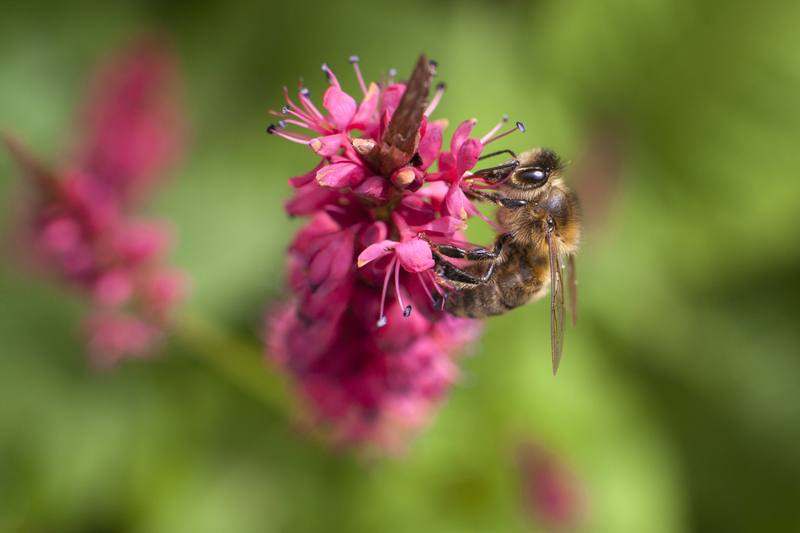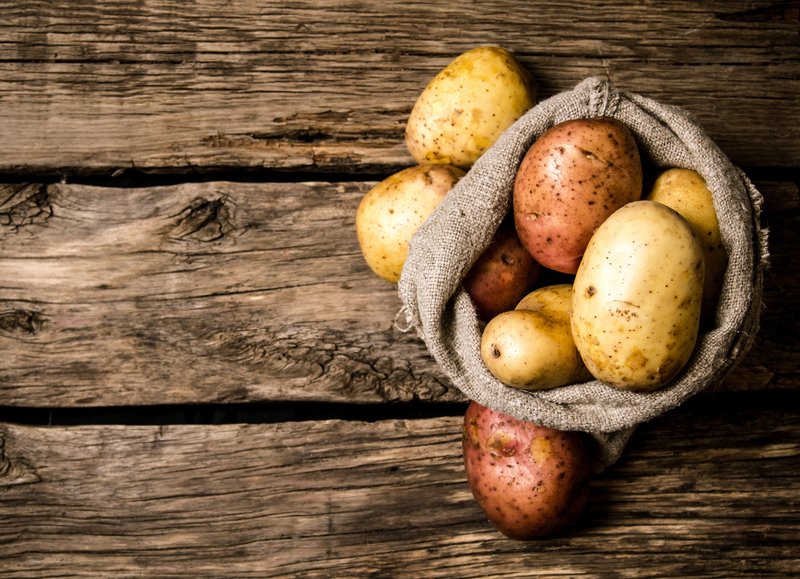Natural Remedies for Dissolving Tree Stumps Over Time
Tree stumps can be unsightly, hazardous, and a nuisance when left behind in your yard after cutting down a tree. Many homeowners look for effective and environmentally friendly ways to remove or dissolve these stumps naturally, without resorting to harsh chemicals or heavy machinery. In this comprehensive guide, we explore natural remedies for dissolving tree stumps over time, offering techniques that are safe, sustainable, and promote healthy soil for future plantings.

Why Choose Natural Tree Stump Removal Methods?
Most traditional methods, such as using chemical stump removers or stump grinders, can be expensive and harmful to the environment. By opting for organic stump dissolution techniques, you can:
- Avoid toxic residues in your garden
- Improve soil health for future growth
- Save money by using readily available household items
- Encourage biodiversity by supporting natural decomposition
Natural stump removal also allows you to work at your own pace, letting the stump break down gradually with minimal effort.
Understanding the Natural Decay Process
Tree stumps are made of dense, woody tissue that takes many years to decompose on its own. Nature relies on fungi, bacteria, insects, and moisture to break down dead wood--a process you can encourage and accelerate with the right techniques. The natural tree stump decomposition process involves:
- Supplying moisture to soften the wood
- Increasing airflow by drilling holes or making cuts
- Adding organic materials to feed decomposers
- Maintaining warmth and darkness for optimal microbial activity
By combining these principles, it's possible to dissolve a tree stump over time with minimal environmental impact.
Effective Natural Remedies for Dissolving Tree Stumps
1. Accelerating Decay with Epsom Salt
One of the most popular and accessible natural stump dissolving remedies is Epsom salt (magnesium sulfate). This mineral compound draws moisture from the wood, dries it out, and supports the growth of rot-causing fungi.
- Drill holes: Using a 1-inch drill bit, make holes every few inches across the top of the stump and the sides. Go as deep as possible (8-12 inches if you can).
- Fill with Epsom salt: Pour dry Epsom salt into each hole, filling to the brim.
- Add water: Lightly moisten the salt by pouring water into each hole, helping it soak into the wood.
- Cover the stump: Place a tarp or thick plastic sheet over the stump. This keeps moisture in and encourages decay.
- Repeat: Reapply Epsom salt every few weeks for several months, as rain and weather might wash it away. After 6-12 months, the stump should be soft and easy to chip or remove.
Epsom salts also enrich the soil with magnesium as the stump breaks down, benefiting nearby plants once the stump is gone.
2. Nourishing Fungi: Using Nitrogen-rich Additives
Fungi and bacteria need nitrogen to break down woody stumps. Applying nitrogen-rich materials helps accelerate decomposition naturally.
- Blood meal: Sprinkle generously on the stump and around its base. This organic fertilizer is high in nitrogen.
- Coffee grounds: Used coffee grounds not only add nitrogen but improve soil texture. Dump them on the stump and work them into any holes or cracks.
- Manure: Well-composted animal manure supplies nutrients that foster microbial growth. Spread a thick layer atop the stump.
Covering the stump after applying these additives retains heat and moisture, further supporting decay. Reapply every few weeks for best results.
3. Compost Pile Conversion: Transforming the Stump into Soil
A creative solution for those who aren't in a hurry is to turn the stump into a natural compost heap. Pile up organic debris, such as grass clippings, leaves, vegetable scraps, and shredded newspaper, directly over and around the stump.
- Build the pile at least 18-24 inches high to generate heat for decomposition.
- Moisten the pile regularly, especially during dry spells, to encourage microbial activity.
- Stir or turn the pile every few weeks to introduce oxygen and keep the process moving.
- Over time, the stump will break down along with the compost, leaving a rich patch of new soil.
This natural stump removal method takes patience--expect results in 1-2 years--but it's eco-friendly and enriches the landscape.
4. Encouraging Fungal Rot: Introducing Mushroom Dowels
Some gardeners intentionally inoculate tree stumps with beneficial mushroom species to foster rapid decay. Edible fungi, such as oyster mushrooms (Pleurotus ostreatus), are especially effective at breaking down lignin and cellulose in wood.
- Purchase mushroom dowels or spawn from a reputable supplier.
- Drill holes in the stump, spaced a few inches apart.
- Insert dowels or pack spawn into holes, then seal with melted wax to keep out competing organisms.
- Water the stump and cover to maintain humidity.
Within a few months, mushrooms sprout while decomposers work overtime to dissolve the tree stump naturally. This method offers the bonus of edible harvests.
5. Using Vinegar for Stump Decomposition
Though not as rapid as Epsom salt, concentrated vinegar can help kill and break down tree stumps. White vinegar absorbs into the wood tissue, drying it out and creating a hostile environment for the remaining roots.
- Drill holes in the stump's surface and pour full-strength vinegar into each one.
- Repeat every few weeks until the stump shows signs of decay--softening, browning, or growing fungus.
- Covering with a tarp further hastens decomposition.
Natural vinegar-based stump removal is safe, cheap, and avoids toxic run-off into the environment.
6. Boiling Water and Solarization
Another eco-friendly method for breaking down a tree stump naturally is using boiling water and solar energy.
- Drill deep holes in the exposed stump.
- Pour several gallons of boiling water into the holes to denature proteins and encourage microbial growth.
- Afterward, cover the stump with thick plastic, weighing down the edges with soil or rocks.
- Let the sun's heat build under the cover for months, "cooking" the stump and speeding decomposition.
This is a safe way to kickstart decomposition without any chemicals, ideal for parents and pet owners.
Tips for Enhancing Natural Stump Breakdown
- Keep the stump moist. Rainwater, a garden hose, or regular watering can keep conditions optimal for rot.
- Remove any regrowth. Cut off suckers or shoots to ensure the stump focuses on decomposing, not regenerating.
- Score or chop the stump. Rough up the surface with an ax or chainsaw to expose more interior wood for decomposers to attack.
- Be patient. Natural stump dissolution is a slow process--depending on size and type, it can take 6 months to several years.
- Stay safe. Wear gloves and eye protection when drilling or handling materials.
Benefits of Natural Stump Dissolving Methods
Choosing to break down a tree stump naturally offers significant advantages over mechanical or chemical methods:
- Eco-friendly: No toxic chemicals enter your soil, groundwater, or garden.
- Cost-effective: Most ingredients, like Epsom salt, coffee grounds, or compost, are inexpensive or already available at home.
- Wildlife-friendly: Fungi, microbes, and insects support garden biodiversity.
- Healthier Soil: The decaying wood becomes organic matter, feeding future plants and improving drainage and fertility.

Frequently Asked Questions about Natural Tree Stump Removal
How long does natural decomposition take to dissolve a stump?
Depending on stump size, tree species, age, and method used, natural stump decay typically requires 6 months to three years. Softwoods decompose much faster than hardwoods.
Is removing a tree stump naturally safe for pets and children?
Yes. Methods using Epsom salt, coffee grounds, compost, or mushrooms are non-toxic. Always supervise children near stumps to prevent accidental trips or falls.
Can these remedies work for all types of tree stumps?
Most organic stump dissolution techniques are effective for all wood types, but hardwoods like oak may take longer. The same natural principles apply regardless of species.
Will grass or plants grow over a dissolved stump area?
Once the stump has fully decomposed, the soil is enriched and ideal for planting lawn, flowers, or shrubs. Simply fill any holes with topsoil and level the ground.
Can I use all methods together?
Absolutely! Combining Epsom salt, composting, and nitrogen-rich materials can supercharge the decaying process. Just avoid excess moisture to prevent waterlogging.
Conclusion: Embrace the Power of Natural Stump Breakdown
Dissolving tree stumps doesn't have to involve harsh chemicals, costly machinery, or time-consuming labor. By employing these natural remedies for tree stump decomposition, homeowners can safely and effectively remove unwanted stumps while nourishing their gardens.
Whether you choose Epsom salt, compost, nitrogen additives, edible fungi, or simple boiling water, patience and persistence are key. In the end, your landscape will be stump-free, your soil will be healthier, and your garden will be a haven for diverse wildlife--all accomplished with nature's own tools.
For a sustainable garden, trust in the organic solutions and watch as nature does its magic, dissolving even the toughest tree stumps over time.
```


